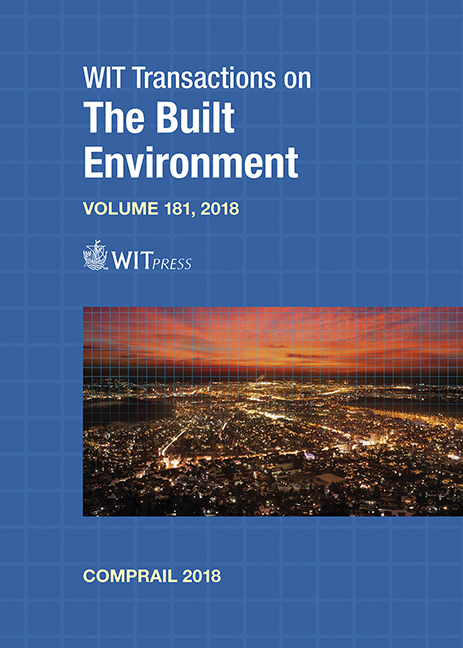COMPARISON OF CONVENTIONAL AND ACOUSTIC IMPACT ECHO TESTS FOR DETECTING A CAVITY UNDERNEATH A CONCRETE SLAB TRACK
Price
Free (open access)
Transaction
Volume
181
Pages
8
Page Range
499 - 506
Published
2018
Size
826 kb
Paper DOI
10.2495/CR180441
Copyright
WIT Press
Author(s)
YUJIN LIM, SEONGBAEK PARK, HOJIN CHOI, JAEHAK PARK
Abstract
Many types of unstable conditions of railway tracks including various modes of irregularities can be produced when cavities are generated exactly underneath a concrete slab track or a slight open space is made under a loose sleeper. The cavities can be generated due to various reasons such as settlements of badly compacted soil or soft soil or drastic change of track stiffness in transition zones near bridge abutment. The loose sleeper embedded in the concrete slab can also produce very undesirable problems including noise, vibration of track and unexpected response between railway car and track structure. Nonetheless, there are currently no useful and effective detecting methods for investigating the cavity presence underneath the railway concrete slab track and the loose sleeper embedded in the slab. In this study, a comparative study is performed for detecting the cavity and checking the condition of the loose sleeper by adapting conventional impact echo test and acoustic impact echo test on the concrete slab surface. It is confirmed that these two NDT methods can be discriminately adaptive techniques for detecting the problematic abnormalities in a concrete slab track. A test bed composed of a rectangular concrete slab with various sizes and height of cavity is built in the backyard for proof test. Detecting algorithm and processing program are developed and proposed based on wavelet and FFT of the obtained data. Acoustic impact echo test is proved to be effective and practical to detect a cavity underneath the concrete slab track. In addition, it is found that conventional impact echo test is also effective and useful to detect loose sleepers embedded in the concrete.
Keywords
cavity, acoustic impact echo test, slab track, NDT





